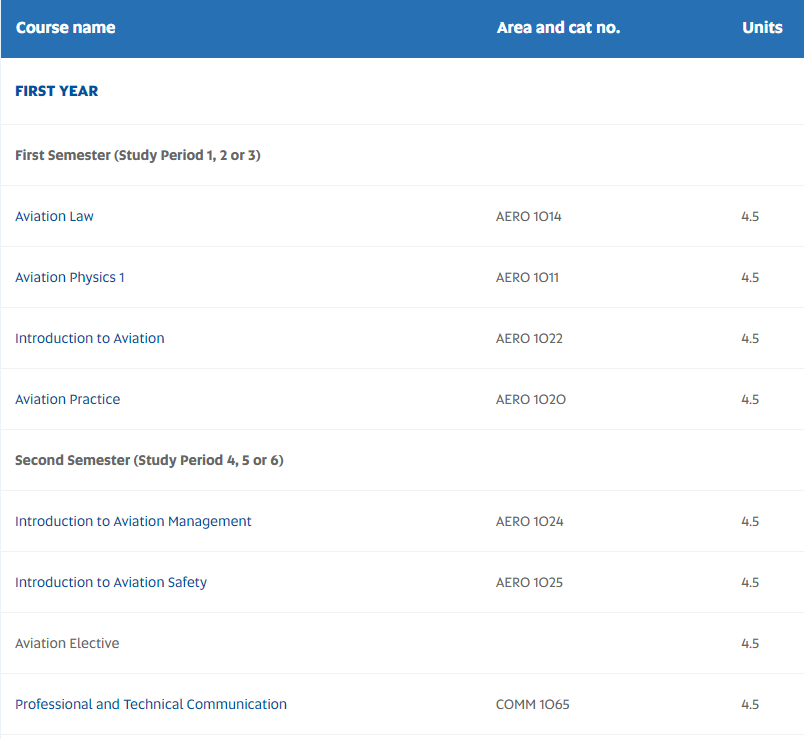FAQs
-
What should I study in high school to apply for this degree?
There are no prerequisites or assumed knowledge for our Aviation degrees.
The Bachelor of Aviation (Pilot) does include physics and mathematics (primarily algebra and geometry) components. Students that struggle in these areas are encouraged to study mathematics and science in high school as it will assist with understanding topics throughout the degree. All students are also recommended to undertake courses that will help to sharpen writing skills. Quality writing underpins many courses in the degree and is a common hindrance of student success.
-
When will I start flying?
Students wishing to complete practical flight training with UniSA will be invited to apply to study the Graduate Diploma of Aviation (LGAN)*. This is studied concurrently with the Bachelor of Aviation (Pilot) (LBAN) from the second year of the bachelor’s program.
*Admission into the Bachelor of Aviation (Pilot) (LBAN) does not guarantee entry into the Graduate Diploma in Aviation. Entry into LGAN is subject to a specific entry process which occurs after the commencement of LBAN. Strict selection and entry criteria apply to LGAN. Offers for admission into LGAN may also be subject to a cap on student numbers.
-
Do I need to have prior flight experience to apply for this degree?
No. The Bachelor of Aviation (Pilot) (LBAN) degree does not require or include flight experience. The Graduate Diploma of Aviation (LGAN)*, undertaken with the Bachelor of Aviation (Pilot) is designed for students who have no prior flight training or experience.
*Admission into the Bachelor of Aviation (Pilot) (LBAN) does not guarantee entry into the Graduate Diploma in Aviation. Entry into LGAN is subject to a specific entry process which occurs after the commencement of LBAN. Strict selection and entry criteria apply to LGAN. Offers for admission into LGAN may also be subject to a cap on student numbers.
-
What is my time commitment going to be for the Bachelor of Aviation (Pilot) degree?
Expected contact hours per week for a student undertaking their first year of Bachelor of Aviation (Pilot) (LBAN) is 20-25 hours. Below is an example of a first year Bachelor of Aviation (Pilot) (LBAN) student timetable:

For our students who fly, in the Graduate Diploma of Aviation (LGAN),* contact hours are increased and are dependent on flight scheduling requirements. Flights schedules are subject to weather and operational restrictions which means that you may fly more in certain periods than at other times.
*Admission into the Bachelor of Aviation (Pilot) (LBAN) does not guarantee entry into the Graduate Diploma in Aviation. Entry into LGAN is subject to a specific entry process which occurs after the commencement of LBAN. Strict selection and entry criteria apply to LGAN. Offers for admission into LGAN may also be subject to a cap on student numbers.
-
What if I already have flight training experience?
The Bachelor of Aviation (Pilot) (LBAN) degree can be studied as a stand-alone degree without concurrently studying the Graduate Diploma of Aviation (LGAN). Students with prior flight experience who apply for and receive an offer for the Graduate Diploma in Aviation may be eligible for credit and can start with advanced standing. Please note that university credit limits for recognition of prior learning apply.
You may wish to speak to one of our staff members to discuss your individual situation. You can contact our Future Student Enquiries team or visit Open Day to speak to one of our Program Directors.
Future student enquiries:
Ph: (08) 8302 2376
Open weekdays from 9.00am to 5.00pm, excluding public holidays.
unisa.edu.au/Study-at-UniSA/Contact-us/ -
What is the application process like?
If you are interested in studying the Bachelor of Aviation (Management) or the Bachelor of Aviation (Pilot) you will need to apply for entry to these programs through SATAC.
Students interested in completing their practical flight training with UniSA will be invited to apply to study the Graduate Diploma of Aviation (LGAN)* at the end of their first year of the Bachelor of Aviation (Pilot) (LBAN). LGAN is studied concurrently from the second year of the bachelors program. The selection process is competitive and includes a formal interview, flight aptitude test and assessment of English proficiency. The interview will assess skills and qualities considered important for professional practice, including professional behavior, personal motivation and commitment, ability to communicate clearly and take direction, workload management and organisational skills, compatibility and understanding of the program and the aviation profession.
Additional Criteria – Before commencing flight training, students must obtain a Class I Medical Certificate (Class II will also be considered if you have held a Class I Certificate within the last three years). Before enrolling in Advanced Flying, students must also hold an Aviation Security Identification Card (ASIC), for more information visit the CASA website.
If you are a mature-aged applicant wanting to study please see our admissions page for further information about the various application processes.
*Admission into the Bachelor of Aviation (Pilot) (LBAN) does not guarantee entry into the Graduate Diploma in Aviation. Entry into LGAN is subject to a specific entry process which occurs after the commencement of LBAN. Strict selection and entry criteria apply to LGAN. Offers for admission into LGAN may also be subject to a cap on student numbers.
-
I have a medical consideration, will I still be able to get medical clearance to fly?
Before commencing flight training, students must obtain a Class I Medical Certificate (Class II will also be considered if you have held a Class I Certificate within the last three years). For more information visit the CASA website.
-
Is FEE-HELP available for this program?
Eligible students may choose to defer their tuition fees through a FEE-HELP loan under the Federal Government’s Higher Education Loan Program. For more information, visit unisa.edu.au/fees and studyassist.gov.au/help-loans
-
Can I work, study and fly?
Success in this program requires a significant time commitment and engagement. Some of our students work, study and fly concurrently; it is up to each student to determine their commitments and their capacity to work. Students are expected to prioritise university studies and scheduled flights cannot be missed. Due to the flexible nature of flight scheduling, this is a challenge for many students who wish to work. Students in this situation are encouraged to have a candid discussion with their employer about the nature of this program to avoid conflicts.
-
What type of planes will I fly during my studies?
Aircraft types are subject to our flight training provider. Students in the Graduate Diploma of Aviation (LGAN)* typically fly DA-40, TB-10, or C-172 aircraft for single engine training.
*Admission into the Bachelor of Aviation (Pilot) (LBAN) does not guarantee entry into the Graduate Diploma in Aviation. Entry into LGAN is subject to a specific entry process which occurs after the commencement of LBAN. Strict selection and entry criteria apply to LGAN. Offers for admission into LGAN may also be subject to a cap on student numbers.
-
What types of planes will I be qualified to fly when I graduate?
Students who undertake and are successful in the Graduate Diploma of Aviation (LGAN)* will obtain a Commercial Pilot License (CPL) and Multi-engine Command Instrument Rating (MECIR). These are professional qualifications recognised by the Civil Aviation Safety Authority (CASA) and the International Civil Aviation Organisation.
Students with these qualifications are eligible for employment in a variety of professional pilot contexts, including as entry-level airline pilots, where they receive specific training for individual aircraft such as B737, A320, etc by their employer.
*Admission into the Bachelor of Aviation (Pilot) (LBAN) does not guarantee entry into the Graduate Diploma in Aviation. Entry into LGAN is subject to a specific entry process which occurs after the commencement of LBAN. Strict selection and entry criteria apply to LGAN. Offers for admission into LGAN may also be subject to a cap on student numbers.
-
What career opportunities are there for the Bachelor of Aviation (Pilot) students without completing the practical flight training?
There are many career paths including Air Traffic Control, dispatch/operations, simulator instruction, and continuing to higher education such as a master degree. Many students also undertake the degree intending to complete flight training at a different time.
-
Admission into Graduate Diploma in Aviation – Aviation Interview and Aptitude Test
What is the aviation interview all about?
The interview component of the Graduate Diploma in Aviation applications will assess skills and qualities considered important for undertaking the program and for use in future professional practice. Interviews are conducted for approximately 30 minutes with at least 2 interviewers, one from UniSA and the other from the flight training provider.
The interview comprises of a series of scenarios and associated questions focusing on an applicant’s personal qualities, including:
- Motivation and commitment
- Communication skills, including the CASA General English Language Proficiency (GELP)
- Workload planning and management skills
- Compatibility with the degree
- Demonstration of professional behaviour
Can I prepare for the interview?
Applicants are encouraged to prepare for the interview but are discouraged from reciting rehearsed responses. Attempts at rehearsing for the interview often trigger ‘rehearsed’ replies rather than ‘natural’ responses, which can lessen overall performance. The exact content and conduct of interviews may change from one year to the next.
Applicants will be asked for the required background evidence for the General English Language Proficiency (GELP) when they are invited to interview, with the expectation that the background evidence is provided in advance of the interview. For details of the background evidence requirements and the criteria for assessing the GELP, please visit the CASA website.
All interviews are conducted face-to-face at UniSA’s Parafield Airport building. We would inform the applicant in advance on his/her interview date/time. It is an applicant’s responsibility to ensure that they are available during the nominated times, as interviews will not be conducted outside of these dates.
What does the aptitude test involve?
The aptitude test is composed of a series of computer-based assessments that cover pilot aptitude, including hand–eye coordination, motor skills and spatial awareness. The aptitude test, known as the PILAPT, is specifically designed for pilots. It is a computer-based test that has 5 separate sections. It tests the applicants’ ability to process information, respond quickly and accurately, and focus on multiple things at once. It takes approximately 1.5 hours. It is not something applicants can study for, and it is unlikely there are any example questions on the Internet that can be practiced. To prepare, advice for students would include eating well in the days before and having a good night’s sleep, so you can be alerted, focussed and sharp.
-
Flight training for Graduate Diploma in Aviation
When is training conducted?
Flight training is undertaken throughout the year, i.e. full-time during the semester break and on no-lesson days during semestral weeks. Students need not attend every day, but are only required to be present 2 hours before their rostered flight times.
How many hours is involved?
Within the Graduate Diploma in Aviation, students will complete approximately 200 hours of flight training. The flight training is undertaken in various stages in order to attain both Commercial Pilot Licence (CPL) and Multi-Engine Command Instrument Rating (MECIR), therefore some students may require additional flying hours based on individual competency.
Thinking of studying soon?
Have any questions? We're here to help! Contact Adelaide University's Future Student Enquiries Team.




